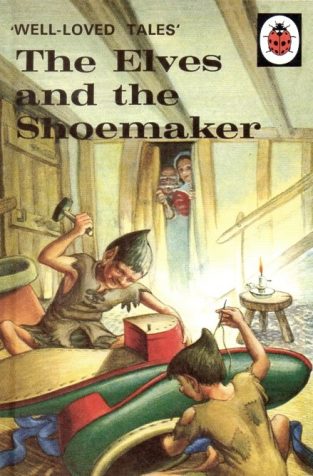
 My parents rarely read to me from books, rather they would tell me stories of their life as children. My father and I shared a love of maps, planning journeys together that we hoped one day we would take. An encyclopaedia would always raise my interest as I was in control of what I wanted to explore and discover – again snippets of information.
My parents rarely read to me from books, rather they would tell me stories of their life as children. My father and I shared a love of maps, planning journeys together that we hoped one day we would take. An encyclopaedia would always raise my interest as I was in control of what I wanted to explore and discover – again snippets of information.
 However, my most favourite book to read was a book of Vogue fashion covers gifted to me by my nanna for Christmas in 1985. Within this book, there were beautiful treasures to behold; tiny details of costume design, scenic panoramas and backgrounds, jewellery and accessories, colour schemes, hairstyles, the human form, elegant lines, evocative times and elegant lives. I would imagine the narrative to the scene, the conversations held, the sights and sounds beyond the image, the lives of those in the frame – all from a single picture.
It is said that a picture is worth a thousand words and I believe this to be very true. Before a child can read text, picture or wordless books help young learners read in the following ways:
They help visual thinkers play to their strengths
However, my most favourite book to read was a book of Vogue fashion covers gifted to me by my nanna for Christmas in 1985. Within this book, there were beautiful treasures to behold; tiny details of costume design, scenic panoramas and backgrounds, jewellery and accessories, colour schemes, hairstyles, the human form, elegant lines, evocative times and elegant lives. I would imagine the narrative to the scene, the conversations held, the sights and sounds beyond the image, the lives of those in the frame – all from a single picture.
It is said that a picture is worth a thousand words and I believe this to be very true. Before a child can read text, picture or wordless books help young learners read in the following ways:
They help visual thinkers play to their strengths Reading is hard for beginners, so taking some of the pressure off with wordless picture books can build confidence. This type of book helps convey the message of the story and readers can get comfortable with the idea of ‘reading’.
They incorporate context clues
With no set narrative to guide the plot, wordless picture books leave a lot to the imagination. But that doesn’t mean there’s no story line. Full of vivid illustrations, these books encourage children to use the images to pick up on context clues and figure out what’s happening.
They welcome retelling
Whether you reread it once or every night at bedtime, there’s always a new direction for a wordless picture book to take and revving up their imagination can inspire them to create their own stories and work their way up to writing, too. Adapted from https://www.scholastic.com/parents/family-life/parent-child/how-wordless-picture-books-help-kids-read.html
It is important to bear in mind that here, there is no right or wrong; children are not expected to have the same thoughts about pictures as adults, nor are they expected to have the same thoughts as another child. Their thoughts, words and ideas are their interpretation of what is seen. This is their story, no-one else’s, and they will lead it wherever they wish. The role of the adult is simply to allow it to happen, providing time, space and energy devoted to sharing a wonderful experience together. No matter what time of day is chosen to read together, the experience will strengthen the bond between you.
Bonding over a book at bedtime
Every evening, since the day my children were born, my husband and/or I would read them a story. As young children, after reading numerous short stories, our bedtime routine would always end with the Owl and the Pussycat (Edward Lear, 1870). This became habit and second nature during bedtime snuggles, however as the children grew older and had separate bedrooms, our bedtime routine changed. To this day, my children (now 10 and 11 years old) still have a story read to them, although the story is often a vehicle for other conversations around the concepts or content within. As the characters and storylines become more complex, the children can explore more – emotions, meaning, motives, behaviour, nuance, anticipated actions and reactions……and so much more. Moreover, they will often identify with a character, event or emotion and use this to open up about something in their lives. We still snuggle, I hope that will never change (well, maybe at some point) and this is something that I have always had a determination to embed. I want my children to grow to be my friends, I hope they will always be able to confide in me and share their thoughts, hopes, fears, aspirations, disappointments and successes. Stories can support this – even if the story becomes inconsequential to the conversations that take place.
Gavin McCormack, (Principal at Farmhouse Montessori School, NSW, Australia) is a frequent contributor on LinkedIn. He is a published author and is currently in the process of completing his latest book ‘How to raise amazing children’. In the book, he writes about what happens when a child reads before bed, which is certainly worthy of note:
Reading is hard for beginners, so taking some of the pressure off with wordless picture books can build confidence. This type of book helps convey the message of the story and readers can get comfortable with the idea of ‘reading’.
They incorporate context clues
With no set narrative to guide the plot, wordless picture books leave a lot to the imagination. But that doesn’t mean there’s no story line. Full of vivid illustrations, these books encourage children to use the images to pick up on context clues and figure out what’s happening.
They welcome retelling
Whether you reread it once or every night at bedtime, there’s always a new direction for a wordless picture book to take and revving up their imagination can inspire them to create their own stories and work their way up to writing, too. Adapted from https://www.scholastic.com/parents/family-life/parent-child/how-wordless-picture-books-help-kids-read.html
It is important to bear in mind that here, there is no right or wrong; children are not expected to have the same thoughts about pictures as adults, nor are they expected to have the same thoughts as another child. Their thoughts, words and ideas are their interpretation of what is seen. This is their story, no-one else’s, and they will lead it wherever they wish. The role of the adult is simply to allow it to happen, providing time, space and energy devoted to sharing a wonderful experience together. No matter what time of day is chosen to read together, the experience will strengthen the bond between you.
Bonding over a book at bedtime
Every evening, since the day my children were born, my husband and/or I would read them a story. As young children, after reading numerous short stories, our bedtime routine would always end with the Owl and the Pussycat (Edward Lear, 1870). This became habit and second nature during bedtime snuggles, however as the children grew older and had separate bedrooms, our bedtime routine changed. To this day, my children (now 10 and 11 years old) still have a story read to them, although the story is often a vehicle for other conversations around the concepts or content within. As the characters and storylines become more complex, the children can explore more – emotions, meaning, motives, behaviour, nuance, anticipated actions and reactions……and so much more. Moreover, they will often identify with a character, event or emotion and use this to open up about something in their lives. We still snuggle, I hope that will never change (well, maybe at some point) and this is something that I have always had a determination to embed. I want my children to grow to be my friends, I hope they will always be able to confide in me and share their thoughts, hopes, fears, aspirations, disappointments and successes. Stories can support this – even if the story becomes inconsequential to the conversations that take place.
Gavin McCormack, (Principal at Farmhouse Montessori School, NSW, Australia) is a frequent contributor on LinkedIn. He is a published author and is currently in the process of completing his latest book ‘How to raise amazing children’. In the book, he writes about what happens when a child reads before bed, which is certainly worthy of note:


Wishing all Hiba Academy Shanghai families all the very best as they enjoy time with their loved ones over the National Day holidays. We will look forward to your return on Monday 8th October.